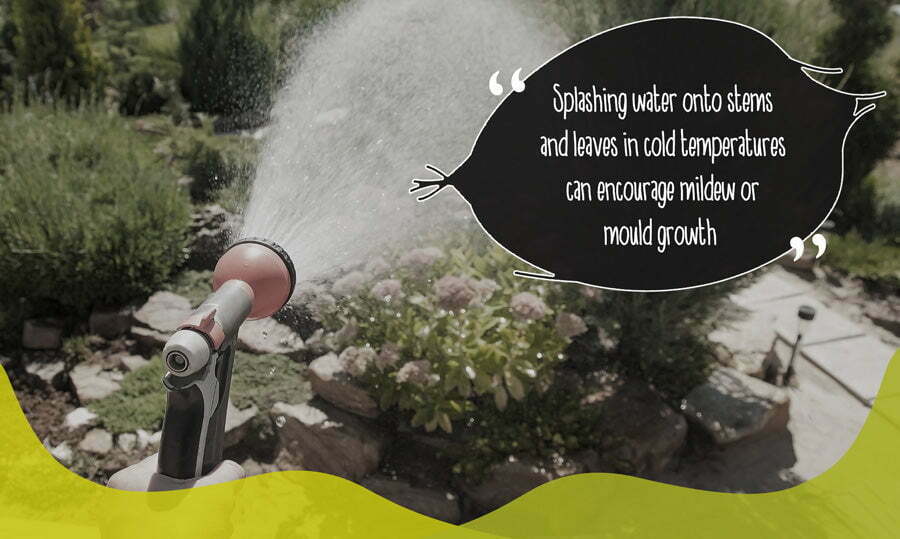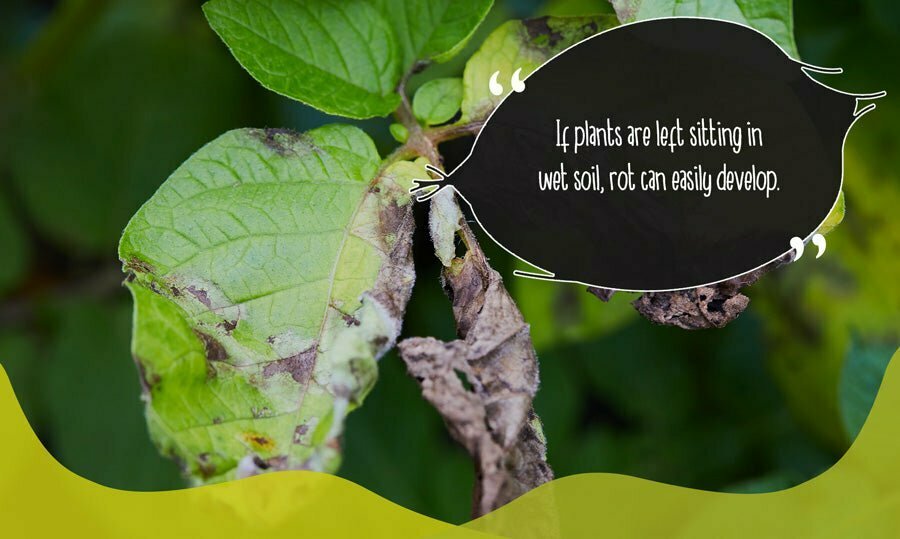Watering plants in winter
Aside from the boost to mental and physical health, gardening in the winter months helps prepare for the growing season and allows you to detect issues promptly.
Do plants need water in winter?
While many plants grow slower or enter a dormant period in cold weather, they are still alive. This means they require water. If roots dry out, it can cause permanent damage.
The prevalence of dry air in winter means windy conditions can quickly dry soil. The heavy toll cold weather can place on plants makes keeping them hydrated essential.
Watering plants during the limited hours of winter sunlight can prevent soil from freezing and causing damage to roots. Water acts as an insulator within pockets in the soil, retaining warmth. Covering wet soil with an insulating layer also offers protection from dehydration and frost.
A layer of heavy snow also acts as an insulator. Areas with lots of snowfall or high levels of rain will need supplemental watering less often.

Insulating layers to use in winter gardening
While gardening fleece or fabric can be laid across soil to protect from frosts, a layer of coco chip mulch or left over/ used coir basket liner can offer a natural insulating barrier, protecting plants from sudden frosts and cold snaps.
Layer 2–3 inches of nutrient-rich compost onto topsoil. Microorganisms will pull nutrients into the soil and break them into a form available to roots. Covering with a layer of chips will protect these natural processes from weather or pest damage.
Chips can also be incorporated into the soil to improve structure and aeration. This encourages healthy root growth and adds nutrients deep into the soil.
Frequency of winter watering for plants
Dormant plants can be watered less frequently, but don’t decrease the volume of water used. Deep watering encourages better root growth than shallow watering.
You will usually need to water your plants well a couple of times a month throughout winter. The easiest way to decide whether plants need watering is to check the soil. If it remains dry after probing a few inches down from the surface, it’s time to water.
Avoid splashing water onto stems and leaves in cold temperatures. This can encourage mildew or mould growth. Any infection that does occur should be stopped by removing the affected areas.

When to increase winter watering
From March and into April, changes will be happening beneath the soil. As temperatures rise, plants will leave their dormant stage. Root systems will start to develop so that they can support plant growth and flowering.
This is the time to ensure your plants are receiving a steady supply of water. Increase the frequency of high-volume waterings, so roots grow deep and strong.
Young plants will be most reliant on watering. However, avoid winter watering of succulents, cacti or other plants adapted to dry conditions. These are prone to rot or disease in wet conditions.
Soil types for winter growing
A soil that is water retentive is important for winter as it helps plants maintain steady hydration levels. Functions to support life are still happening within dormant plants, and water is needed to facilitate these. Roots also need to be kept from freezing or dying.
At the same time, wet and freezing winter weather makes well-drained soil crucial to healthy root systems. If plants are left sitting in wet soil, rot can easily develop and kill off the plant. Sitting water also makes freezing much more likely.
In some cases, wet soil can prevent roots from taking in gases essential to plant functions. This can increase the chance of fungal infection and poor health, or even suffocate the plant.
As some soil will need a little time to become absorbent after drying, add a small amount of water at first. Wait a minute before continuing. This prevents the water from flushing through, washing away essential nutrients and not allowing roots time to absorb water.

Using peat-free coco coir to keep plants healthy in winter
Coco coir compost is easier to rehydrate once it dries, unlike sphagnum peat which becomes hydrophobic when dry. Coir’s texture also provides water and air pockets, aiding insulation and providing oxygen to the plant roots. It’s unsurprising that coco peat or coco coir as it’s now more commonly known is used as a soil conditioner to provide soil texture most beneficial to plants.
As it is water retentive, coco coir provides a more reliable supply of water to plant roots. It also improves soil structure and gives roots better access to air.
Coco chip mulch can be used for mulching and incorporated into heavy or waterlogged soils to improve structure and drainage for root systems. They also offer a layer of insulation to the topsoil, preventing damage from winter weather while protecting the roots into the spring season.
At Coco & Coir, we understand the importance of winter care for the survival of your plants and shrubs. Our complete range of
coco coir composts and soil mixes provide options for plants of all types, making it simpler for your garden to greet the warmer months in rude health.










